
Recently, wild horse and burro advocates in Tuscon, AZ applied for a booth at the Arizona’s Game & Fish Department’s (AZGFD) Wildlife Outdoor Expo to help raise public awareness about America’s wild horses and burros - and were denied.
AZGFD Deputy Director Gary Hovatter responded to questions posed by Julianne French about the denial in a letter dated March 26, 2009. Click Here to view.
His letter opens with a reminder that as a state agency, they are not subject to Freedom of Information Act requests and then moves on to a refusal to provide information about the consultation process that denied the WH&B advocates equal access to the Expo.
Even though Director Hovatter admitted the purpose of the Expo was to fulfill the Departments mandate to provide information about wildlife, it excused itself from compliance by citing wild horses and burros were not wildlife.
Following this bold assertion, the letter went on to define wildlife was only defined by AZ state law and that federal courts had NOT defined wild horses or burros as wildlife. While Deputy Director Hovatter continued to try and excuse the Department’s behavior through misrepresenting the truth about wildlife classifications, he failed to provide a single legal reference to support his “new” definition - and in this case - he's dead wrong.
For those unfamiliar with the history of federal protection for wild horses and burros, the first legal challenge to the Wild Free-Roaming Horse & Burro Act was Kleppe v. New Mexico, which was initiated when group of ranchers seized 19 wild burros and sold them at a state livestock auction while claiming the federal government had no jurisdiction within the state to protect wildlife.
On June 17, 1976, a federal judge ruled that Congress had granted wild horses and burros protection on public lands as both wildlife and wild animals and both the Secretary’s of the Interior and Agriculture had the authority to enter into cooperative agreements with land owners and other state and federal agencies to assure their protection.
Those seeking to overturn their federal protection argued that the Act violated traditional state power over wild animals but the judge clearly rebutted this argument by stating, “No doubt it is true that as between a State and its inhabitants the State may regulate the killing and sale of [wildlife], but it does not follow that its authority is exclusive of paramount powers”.
The ruling also went further by demanding States must submit to federal authority when challenged when it went on to say, “But where those state laws conflict with the Wild Free-Roaming Horse & Burro Act, or with other legislation passed pursuant to the Property Clause, the law is clear: the state laws must recede…”
Finally, wild horses and burros were clearly defined as a federally protected wildlife species as the judge ruled, “We hold today that the Property Clause also gives Congress the power to protect wildlife on public lands, state law notwithstanding” and cited several cases to support the federal governments ability to protect wild animals across state lines that superceded State powers, which included Missouri v. Holland, Toomer v. Witsell, and Hunt v. the United States.
AZGF has clearly demonstrated extreme prejudice by acting contrary to federal law through their misguided attempt to again assert State authority as supreme. Their utter failure to acknowledge wild free-roaming horses and burros having been defined for over thirty years as a federally protected wildlife species, which resulted in denying advocates a booth at the Expo, is a travesty and shows clear contempt of both federal law and their unwillingness to both comply and cooperate in the preservation, protection and conservation of America’s wild horses and burros.
As Deputy Director Hovatter was overstepping his authority on the state level, Director Larry Voyles was simultaneously demonstrating the Department’s personal prejudices and contempt by testifying last month’s in a Congressional subcommittee hearing on H.R. 1018. Director Voyle spoke out against H.R. 1018’s provision that attempt to increase habitat for wild horses and burros and he focused solely on protecting anything and everything else. Apparently, while leaning heavily on the “thriving natural ecological balance”, Director Voyle doesn’t believe that “balance” is inclusive of wild horses or burros.
There’s a reason Arizona’s state wildlife agency has put “Game” first in the Department’s title and expanding habitat for other species such as the high dollar bighorn sheep continues to be their top priority. In fact, AZGFD is so blatant about their allegiance to big game species that generate money over all other wildlife protection and conservation, a post last April in Invisible Voices claimed the AZGF Department should be renamed the “Arizona Hunting Revenue Department”.
Additionally, AZGF was included in a lawsuit last April that charged both them and U.S. Fish & Wildlife Service with secretly adding water developments to increase bighorn populations in the Kofa Wildlife Refuge, which are routinely transplanted throughout the state and the Southwest to increase both their habitats and populations. Those who filed the lawsuit alleged they were attempting to turn a public wildlife refuge into a big game hunting reserve.
Currently, Arizona is home to almost 7,000 bighorn and 35,000 elk with pronghorn antelope and mule deer populations so numerous, they aren’t even bothering to report them. Meanwhile, Arizona’s wild burro populations, the last outpost in the entire Southwest where herd numbers are still considered remotely viable, have been capped at a measly 1,436. As for wild horses, only 240 are allowed in Arizona before removals are schedules and those numbers include the foals!
AZGF has also put out a series of videos promoting their big game species and coincidentally, one highlighting the “problems of feral burros”. In their feral burro expose, they describe in great detail how the burros threaten bighorn and mule deer by eating grasses, how the way they consume forage kills plants and how wild burros in Alamo have been found stripping bark off of cottonwood trees - complete with graphic images of exposed trunks and teeth marks to prove their point.
In yet another coincidence, the Alamo area where AZGFD is blaming wild burros for bark stripping, the area also touts a small population of elk, which are well known for their bark stripping tree attacks as well as wallowing in water and destroying riparian areas.
If you were to take the time to watch all AZGFD big game video’s, it’s hard not to notice how they aren’t concerned about the effects of grass consumption to bighorn and mule deer from the 35,000 elk roaming the state, only how much the 1,436 wild burros consume.
To add even more weight to how overt Arizona’s prejudice is against wild burros, the Arizona Desert Bighorn Sheep Society, which works very closely with AZGFD, has publicly posted under their Goals & Missions that their #5 priority is to “support the reduction of feral burros in bighorn habitat”. Click Here to view.
Quite a sweet deal as this open-ended goal always allows bighorn habitat to expand as they are transplanted into wild burro habitat, habitat which then becomes subject to further erosions of resources and allowed population levels and/or are zeroed out to protect the newly introduced “native wildlife”. It packs even more punch since Fish & Game Departments (with the help from such heavy hitters as the Sierra Club) have maneuvered a special status classification for bighorn throughout the Southwest by all state and federal agencies.
However, AZGFD isn’t the only one who considers the bighorn hunting’s “sacred cow” as a video recently produced by Oregon’s Fish & Game Department so clearly shows. After watching it, it’s hard to believe these are actually “wild animals” as they look more like a domestic sheep herd and I couldn’t help but be appalled at yet again the bold-face hypocrisy being demonstrated against wild horses and burros compared to other wildlife species. The very efforts wild horse and burro advocates have been trying to get BLM to implement for our wild herds for years are easily carried out for these bighorn – no questions asked. Click Here to view.
AZGFD is also involved in a recent scandal regarding the death of the last known jaguar in the country that was inadvertently caught in a trap that AZGFD then collared and set free. Apparently, the initial story was the jaguar was believed to have developed kidney failure shortly after being collared and officials euthanized the jaguar as a result.
However, an autopsy later determined the “kidney failure” was actually dehydration and as a result the federal government has opened a criminal investigation into its capture and death. In order to cover their tracks, AZGF have opened their own investigation after the fact. Imagine that….
As Arizona citizens are calling for yet another investigation into AZGF’s continued abuse of their authority, this time by denying equal access to a legally mandated wildlife expo, the Tuscon Citizen printed a letter by wild horse advocate Julianne French on April 7, 2009, "Game and Fish Reined In Free Speech Expo", which blasted the Department for their prejudicial and repressive policies. Click Here to view.
In response, AZGF has published a rebuttal on both the AZGF’s website (Click Here to view) as well as submitting this same response to the Tuscon Citizen two days ago in a letter titled, "What's Not Covered At Outdoor Expo". Those who would like to denounce AZGF’s continued persecution of wild horses and burros and call for an investigation into their activities, please use this opportunity to comment and express your outrage by Clicking Here.
However, before you comment you might want to read what others have been saying about “Arizona’s Hunting Revenue Department” long before this incident by clicking the links below.
Daniel’s News & Views,Biologist fights AZGFD game farm on Kofa refuge 4-02-08
Invisible Voices,More mountain lion killings on Kofa NWR 4-04-08
Inquiry Is Opened Into Death of Last Known Jaguar in U.S., NY Times, 4-04-09
Cover photo of Arizona wild burro, #2258 recently removed from the Big Sandy Herd Management Area (HMA).
AZGFD Deputy Director Gary Hovatter responded to questions posed by Julianne French about the denial in a letter dated March 26, 2009. Click Here to view.
His letter opens with a reminder that as a state agency, they are not subject to Freedom of Information Act requests and then moves on to a refusal to provide information about the consultation process that denied the WH&B advocates equal access to the Expo.
Even though Director Hovatter admitted the purpose of the Expo was to fulfill the Departments mandate to provide information about wildlife, it excused itself from compliance by citing wild horses and burros were not wildlife.
Following this bold assertion, the letter went on to define wildlife was only defined by AZ state law and that federal courts had NOT defined wild horses or burros as wildlife. While Deputy Director Hovatter continued to try and excuse the Department’s behavior through misrepresenting the truth about wildlife classifications, he failed to provide a single legal reference to support his “new” definition - and in this case - he's dead wrong.
For those unfamiliar with the history of federal protection for wild horses and burros, the first legal challenge to the Wild Free-Roaming Horse & Burro Act was Kleppe v. New Mexico, which was initiated when group of ranchers seized 19 wild burros and sold them at a state livestock auction while claiming the federal government had no jurisdiction within the state to protect wildlife.
On June 17, 1976, a federal judge ruled that Congress had granted wild horses and burros protection on public lands as both wildlife and wild animals and both the Secretary’s of the Interior and Agriculture had the authority to enter into cooperative agreements with land owners and other state and federal agencies to assure their protection.
Those seeking to overturn their federal protection argued that the Act violated traditional state power over wild animals but the judge clearly rebutted this argument by stating, “No doubt it is true that as between a State and its inhabitants the State may regulate the killing and sale of [wildlife], but it does not follow that its authority is exclusive of paramount powers”.
The ruling also went further by demanding States must submit to federal authority when challenged when it went on to say, “But where those state laws conflict with the Wild Free-Roaming Horse & Burro Act, or with other legislation passed pursuant to the Property Clause, the law is clear: the state laws must recede…”
Finally, wild horses and burros were clearly defined as a federally protected wildlife species as the judge ruled, “We hold today that the Property Clause also gives Congress the power to protect wildlife on public lands, state law notwithstanding” and cited several cases to support the federal governments ability to protect wild animals across state lines that superceded State powers, which included Missouri v. Holland, Toomer v. Witsell, and Hunt v. the United States.
AZGF has clearly demonstrated extreme prejudice by acting contrary to federal law through their misguided attempt to again assert State authority as supreme. Their utter failure to acknowledge wild free-roaming horses and burros having been defined for over thirty years as a federally protected wildlife species, which resulted in denying advocates a booth at the Expo, is a travesty and shows clear contempt of both federal law and their unwillingness to both comply and cooperate in the preservation, protection and conservation of America’s wild horses and burros.
As Deputy Director Hovatter was overstepping his authority on the state level, Director Larry Voyles was simultaneously demonstrating the Department’s personal prejudices and contempt by testifying last month’s in a Congressional subcommittee hearing on H.R. 1018. Director Voyle spoke out against H.R. 1018’s provision that attempt to increase habitat for wild horses and burros and he focused solely on protecting anything and everything else. Apparently, while leaning heavily on the “thriving natural ecological balance”, Director Voyle doesn’t believe that “balance” is inclusive of wild horses or burros.
There’s a reason Arizona’s state wildlife agency has put “Game” first in the Department’s title and expanding habitat for other species such as the high dollar bighorn sheep continues to be their top priority. In fact, AZGFD is so blatant about their allegiance to big game species that generate money over all other wildlife protection and conservation, a post last April in Invisible Voices claimed the AZGF Department should be renamed the “Arizona Hunting Revenue Department”.
Additionally, AZGF was included in a lawsuit last April that charged both them and U.S. Fish & Wildlife Service with secretly adding water developments to increase bighorn populations in the Kofa Wildlife Refuge, which are routinely transplanted throughout the state and the Southwest to increase both their habitats and populations. Those who filed the lawsuit alleged they were attempting to turn a public wildlife refuge into a big game hunting reserve.
Currently, Arizona is home to almost 7,000 bighorn and 35,000 elk with pronghorn antelope and mule deer populations so numerous, they aren’t even bothering to report them. Meanwhile, Arizona’s wild burro populations, the last outpost in the entire Southwest where herd numbers are still considered remotely viable, have been capped at a measly 1,436. As for wild horses, only 240 are allowed in Arizona before removals are schedules and those numbers include the foals!
AZGF has also put out a series of videos promoting their big game species and coincidentally, one highlighting the “problems of feral burros”. In their feral burro expose, they describe in great detail how the burros threaten bighorn and mule deer by eating grasses, how the way they consume forage kills plants and how wild burros in Alamo have been found stripping bark off of cottonwood trees - complete with graphic images of exposed trunks and teeth marks to prove their point.
In yet another coincidence, the Alamo area where AZGFD is blaming wild burros for bark stripping, the area also touts a small population of elk, which are well known for their bark stripping tree attacks as well as wallowing in water and destroying riparian areas.
If you were to take the time to watch all AZGFD big game video’s, it’s hard not to notice how they aren’t concerned about the effects of grass consumption to bighorn and mule deer from the 35,000 elk roaming the state, only how much the 1,436 wild burros consume.
To add even more weight to how overt Arizona’s prejudice is against wild burros, the Arizona Desert Bighorn Sheep Society, which works very closely with AZGFD, has publicly posted under their Goals & Missions that their #5 priority is to “support the reduction of feral burros in bighorn habitat”. Click Here to view.
Quite a sweet deal as this open-ended goal always allows bighorn habitat to expand as they are transplanted into wild burro habitat, habitat which then becomes subject to further erosions of resources and allowed population levels and/or are zeroed out to protect the newly introduced “native wildlife”. It packs even more punch since Fish & Game Departments (with the help from such heavy hitters as the Sierra Club) have maneuvered a special status classification for bighorn throughout the Southwest by all state and federal agencies.
However, AZGFD isn’t the only one who considers the bighorn hunting’s “sacred cow” as a video recently produced by Oregon’s Fish & Game Department so clearly shows. After watching it, it’s hard to believe these are actually “wild animals” as they look more like a domestic sheep herd and I couldn’t help but be appalled at yet again the bold-face hypocrisy being demonstrated against wild horses and burros compared to other wildlife species. The very efforts wild horse and burro advocates have been trying to get BLM to implement for our wild herds for years are easily carried out for these bighorn – no questions asked. Click Here to view.
AZGFD is also involved in a recent scandal regarding the death of the last known jaguar in the country that was inadvertently caught in a trap that AZGFD then collared and set free. Apparently, the initial story was the jaguar was believed to have developed kidney failure shortly after being collared and officials euthanized the jaguar as a result.
However, an autopsy later determined the “kidney failure” was actually dehydration and as a result the federal government has opened a criminal investigation into its capture and death. In order to cover their tracks, AZGF have opened their own investigation after the fact. Imagine that….
As Arizona citizens are calling for yet another investigation into AZGF’s continued abuse of their authority, this time by denying equal access to a legally mandated wildlife expo, the Tuscon Citizen printed a letter by wild horse advocate Julianne French on April 7, 2009, "Game and Fish Reined In Free Speech Expo", which blasted the Department for their prejudicial and repressive policies. Click Here to view.
In response, AZGF has published a rebuttal on both the AZGF’s website (Click Here to view) as well as submitting this same response to the Tuscon Citizen two days ago in a letter titled, "What's Not Covered At Outdoor Expo". Those who would like to denounce AZGF’s continued persecution of wild horses and burros and call for an investigation into their activities, please use this opportunity to comment and express your outrage by Clicking Here.
However, before you comment you might want to read what others have been saying about “Arizona’s Hunting Revenue Department” long before this incident by clicking the links below.
Daniel’s News & Views,Biologist fights AZGFD game farm on Kofa refuge 4-02-08
Invisible Voices,More mountain lion killings on Kofa NWR 4-04-08
Inquiry Is Opened Into Death of Last Known Jaguar in U.S., NY Times, 4-04-09
AZGFD "Feral Burro Video"
Cover photo of Arizona wild burro, #2258 recently removed from the Big Sandy Herd Management Area (HMA).

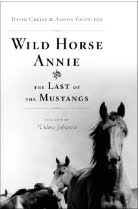








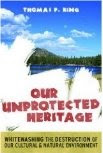



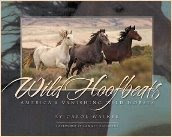




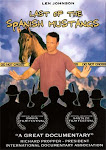





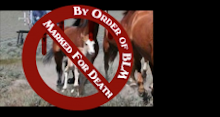

No comments:
Post a Comment